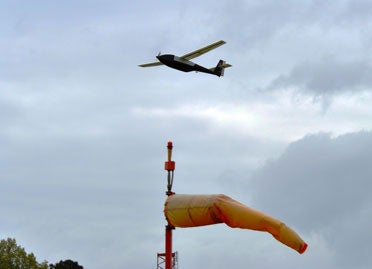
US Naval Research Laboratory (NRL) researchers have demonstrated endurance capabilities of the Ion Tiger unmanned aerial vehicle (UAV), powered by liquid hydrogen (LH2) fuel cells, as part of a research programme.
The programme comprises two separate efforts, including the UAV technology and fuel cell systems, aimed at significantly improving battlefield surveillance capabilities.
During the test flight, researchers flew the UAV for 48 hours and one minute, far beyond the previous endurance record of 26 hours and two minutes set in 2009, using liquid hydrogen fuel in a new NRL-developed cryogenic fuel storage tank and delivery system.
The Ion Tiger UAV previously performed high-endurance flight with a 6lb payload, but was powered by gaseous hydrogen stored at 5000psi.
NRL principal investigator Dr Karen Swider-Lyons said: "Liquid hydrogen coupled with fuel-cell technology has the potential to expand the utility of small unmanned systems by greatly increasing endurance while still affording all the benefits of electric propulsion."
Operated with a high-power fuel cell propulsion system, the Ion Tiger UAV features high-pressure, lightweight hydrogen storage tanks to reduce weight, while fuel cell produces low noise and heat signature and emits less infrared energy.
Designed for increased flight endurance and durability in warfare environments, the fuel cell UAV can reduce the number of daily launches to collect data.
Sponsored by the Office of Naval Research (ONR), the LH2 flight capability is currently under development with NRL’s tactical electronic warfare and chemistry divisions.
Development of LH2 for use as fuel to address the logistics of in-theatre supply of liquid or gaseous hydrogen has also been proposed by NRL.
Image: Liquid hydrogen-powered Ion Tiger unmanned aerial vehicle during test flight. Photo: courtesy of US Naval Research Laboratory.





